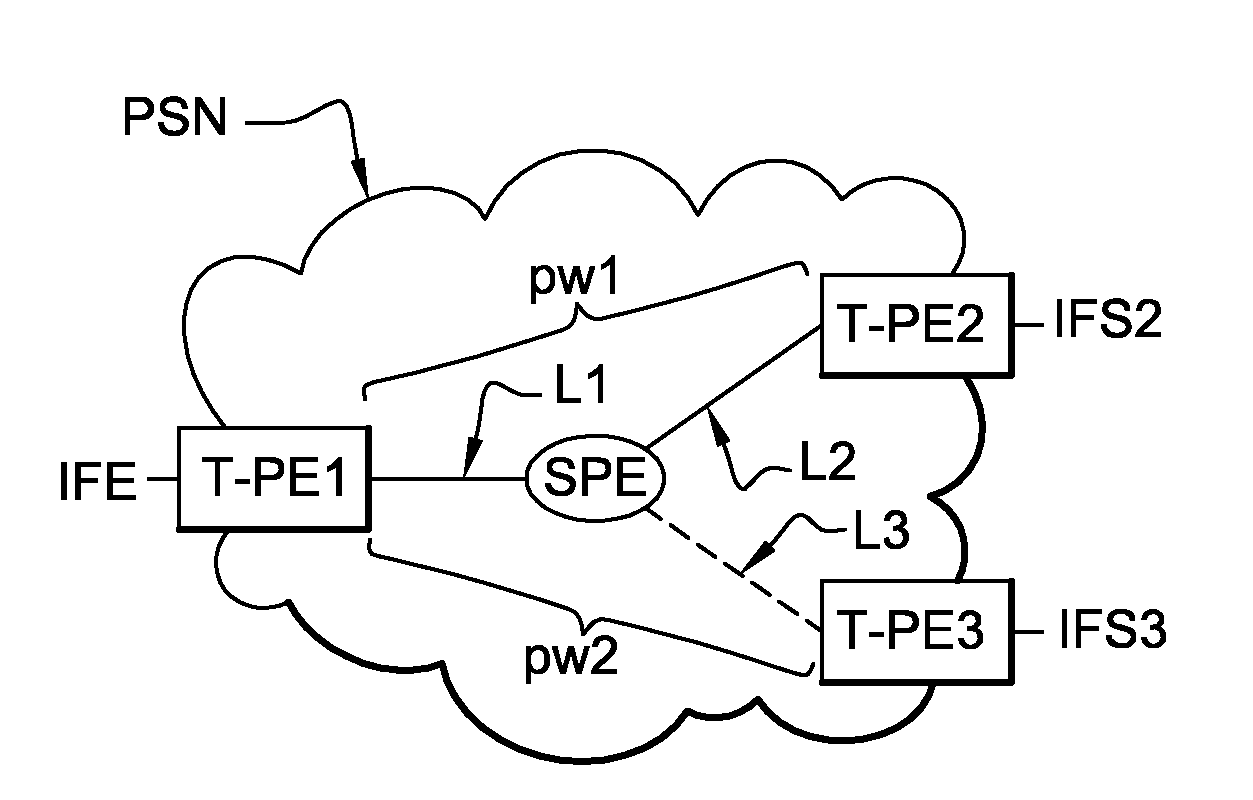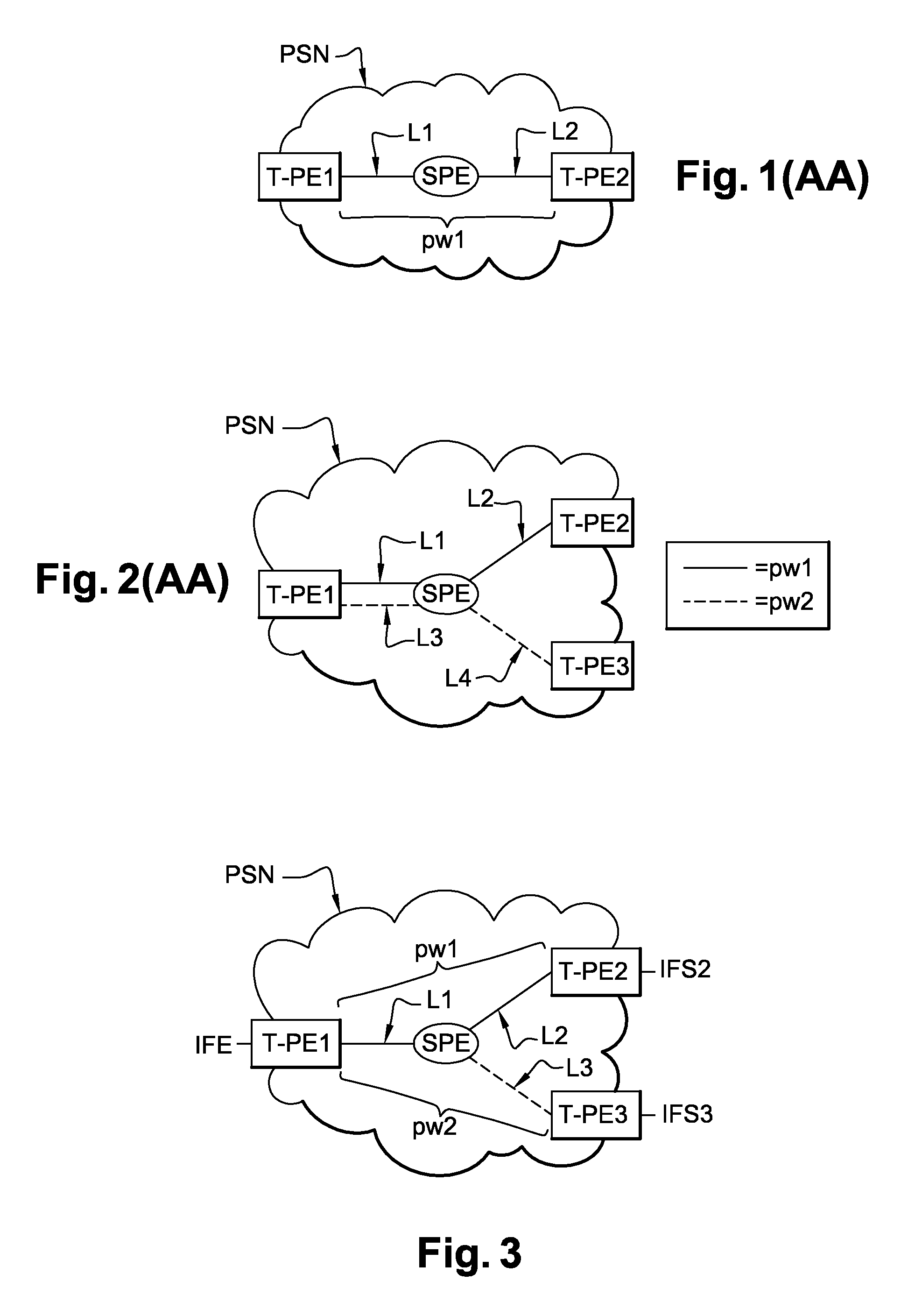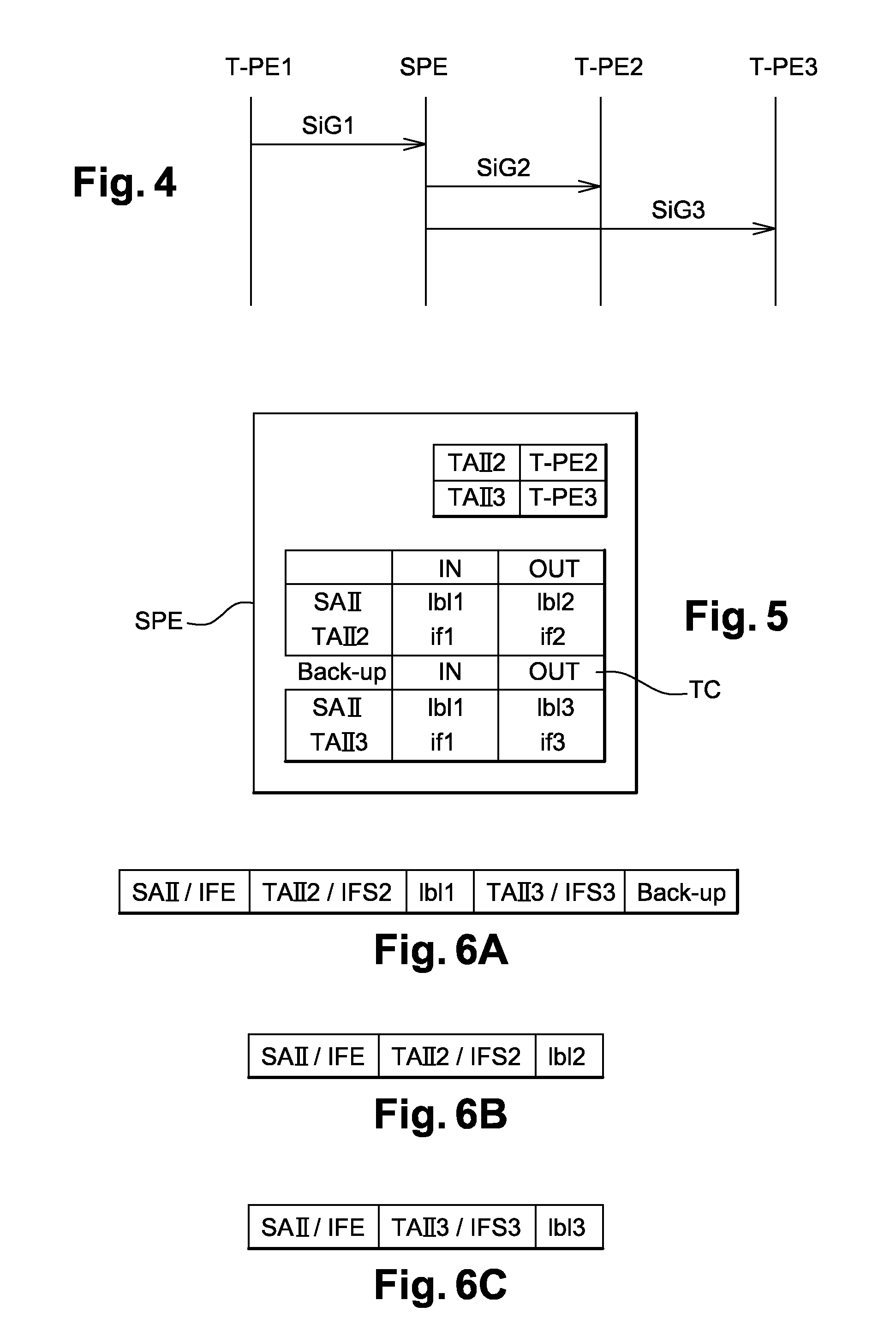Mechanism for Protecting a Pseudo-Wire
a pseudo-wire and mechanism technology, applied in the field of packet-switched networks, can solve the problems of consuming network resources, consuming network resources, and processing resources in network equipment, so as to improve the responsiveness of the network, improve the restore time on detection, and reduce the quantity of data lost
- Summary
- Abstract
- Description
- Claims
- Application Information
AI Technical Summary
Benefits of technology
Problems solved by technology
Method used
Image
Examples
first embodiment
[0072]FIG. 7 represents a timing diagram of the exchange of messages between the input router T-PE1, the intermediate router S-PE, the first output router T-PE2, and the second output router T-PE3 when broadcasting data streams in the invention.
[0073]A data stream D1 is sent by the input router T-PE1 to the first output router T-PE2. This first data stream is broadcast over the network PSN by means of the first pseudo-wire pw1.
[0074]To ensure continuity of service, the input router T-PE1 includes a function for detecting a fault affecting the first output router T-PE2. In order to detect this kind of fault, the input router T-PE1 regularly exchanges “echo” messages with the first output router T-PE2 and with the intermediate router S-PE.
[0075]If the input router does not receive a response to an “echo” message, it deduces that the first output router T-PE2 or the intermediate router S-PE is faulty.
[0076]If the faulty router is the first output router T-PE1, it then sends the interme...
second embodiment
[0078]FIG. 8 is a timing diagram of the exchange of messages between the input router T-PE1, the intermediate router S-PE, the first output router T-PE2, and the second output router T-PE3 when broadcasting data streams in the invention.
[0079]A data stream D1′ is sent by the input router T-PE1 to the first output router T-PE2. This data stream is broadcast over the network PSN by the first pseudo-wire pw1.
[0080]To ensure continuity of service, the intermediate router S-PE includes a function for detecting a fault affecting the first output router T-PE2. In order to detect such a fault, the intermediate router S-PE regularly exchanges “echo” messages with the first output router T-PE2.
[0081]If the intermediate router does not receive a response to its “echo” message, it deduces that the first output router T-PE2 is faulty. It then switches the data streams coming from the input router T-PE1 to the link L3 and advises the input router T-PE1 of this.
[0082]Thus a data stream D2′ sent by...
PUM
 Login to View More
Login to View More Abstract
Description
Claims
Application Information
 Login to View More
Login to View More - R&D
- Intellectual Property
- Life Sciences
- Materials
- Tech Scout
- Unparalleled Data Quality
- Higher Quality Content
- 60% Fewer Hallucinations
Browse by: Latest US Patents, China's latest patents, Technical Efficacy Thesaurus, Application Domain, Technology Topic, Popular Technical Reports.
© 2025 PatSnap. All rights reserved.Legal|Privacy policy|Modern Slavery Act Transparency Statement|Sitemap|About US| Contact US: help@patsnap.com



